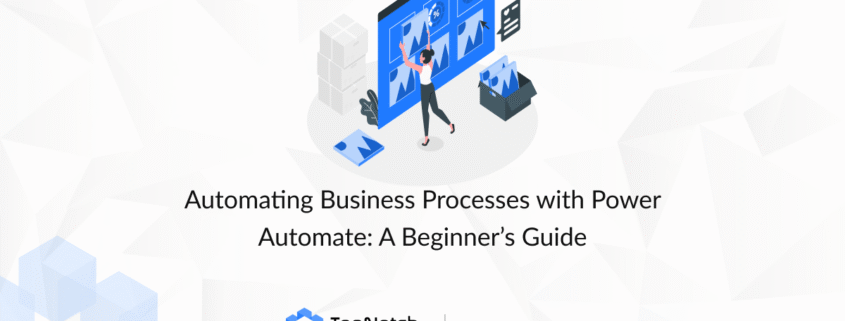Automating Business Processes with Power Automate: A Beginner’s Guide
Introduction
Automation is no longer a luxury; it’s a necessity for businesses aiming to increase efficiency, reduce errors, and save costs. Microsoft Power Automate offers a powerful low-code platform that enables users to automate repetitive tasks across hundreds of applications and services. Whether you’re new to automation or looking to expand your digital transformation efforts, this beginner’s guide will get you started with Power Automate.
What is Power Automate?
Power Automate (formerly Microsoft Flow) is a cloud-based automation tool that helps users create workflows, known as “flows,” that connect apps and services. These flows can automate everything from simple notifications to complex approval processes.
Why Automate Business Processes?
- Increase productivity: Free up employees from manual, repetitive tasks.
- Improve accuracy: Reduce human errors in data entry and approvals.
- Enhance responsiveness: Automate real-time notifications and escalations.
- Save costs: Streamline operations and reduce overhead.
Getting Started with Power Automate
Identify Processes to Automate
Start with repetitive, time-consuming tasks like approval requests, data synchronization, or notifications. Common examples include invoice approvals, employee onboarding workflows, or social media posting.
Use Pre-Built Templates
Power Automate offers hundreds of templates for popular workflows such as “Send a welcome email to new SharePoint list items” or “Save email attachments to OneDrive.” These templates make it easy to get started without building from scratch.
Build Your First Flow
Use the visual designer to drag and drop triggers (events that start the flow) and actions (tasks performed by the flow). For example, a flow triggered by a new email could automatically save attachments and send a notification.
Test and Refine
Run your flow with sample data and monitor for errors. Refine conditions and actions to ensure it works as expected.
Publish and Monitor
Once satisfied, publish the flow and monitor its execution history and run status from the Power Automate portal.
Key Features to Explore
- Triggers: Start flows based on events like receiving emails, form submissions, or file uploads.
- Approvals: Automate approval processes with multi-stage workflows and reminders.
- Connectors: Integrate with over 400 services, including Microsoft 365, Dynamics 365, Salesforce, and Twitter.
- AI Builder: Add AI capabilities such as form processing and sentiment analysis to your flows.
Security and Governance Considerations
Establish DLP policies and monitor flow usage to prevent unauthorized access or data leaks. Work with IT to ensure compliance with company security standards.
How TopNotch Technology Can Help
TopNotch Technology offers Power Automate consulting and hands-on workshops to help your team identify automation opportunities, build effective flows, and govern your automation platform securely.
Conclusion
Power Automate empowers businesses of all sizes to automate and optimize critical processes without heavy IT involvement. Starting with small wins, you can build momentum and scale automation across departments, driving real business impact.
Start automating today with Power Automate and TopNotch Technology’s expert guidance.
